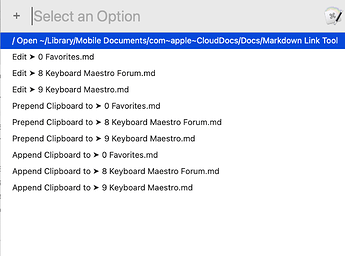One thing to consider: How often will the user need to modify the URL list?
The reason I use a text files in Markdown Link Tool is that I need modify the files frequently. There are three or more text files (three initially) in a folder and the following options are available to modify the contents:
I'm sure this would be overkill for your application, but the Edit option could be used. That's done with the Open a File Folder or Application action which opens the file with the default application (in my case BBEdit).
